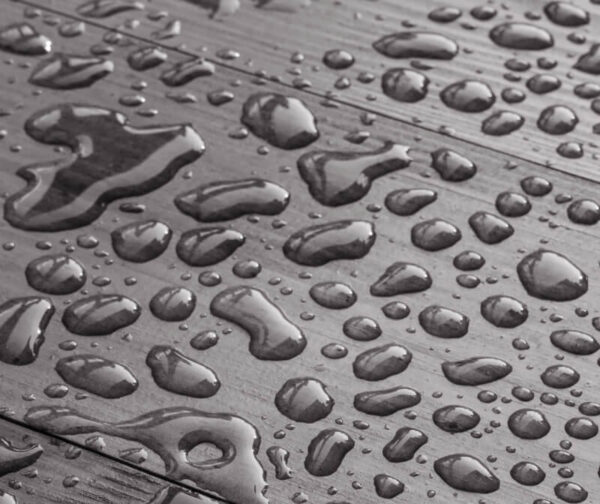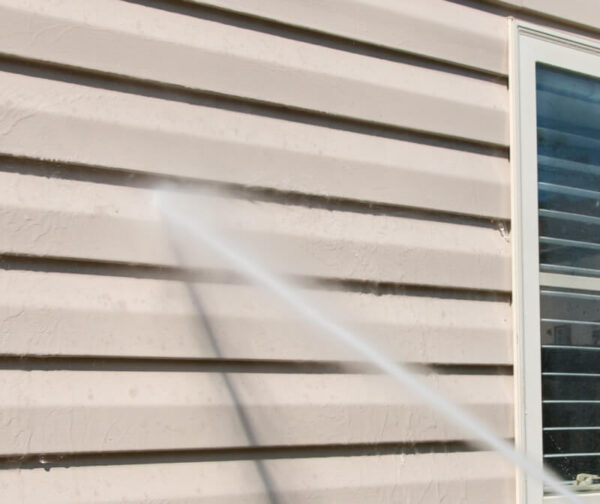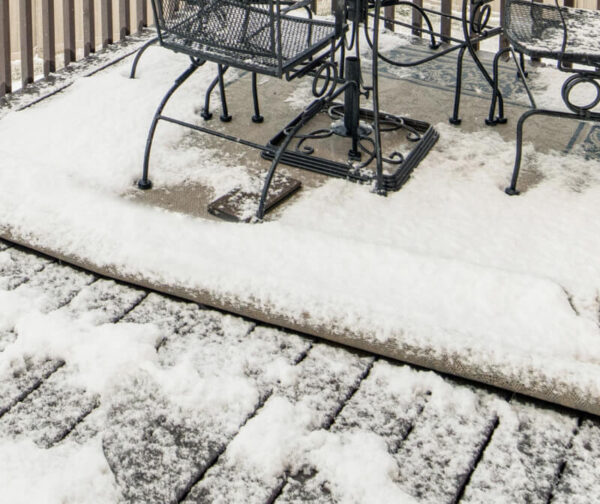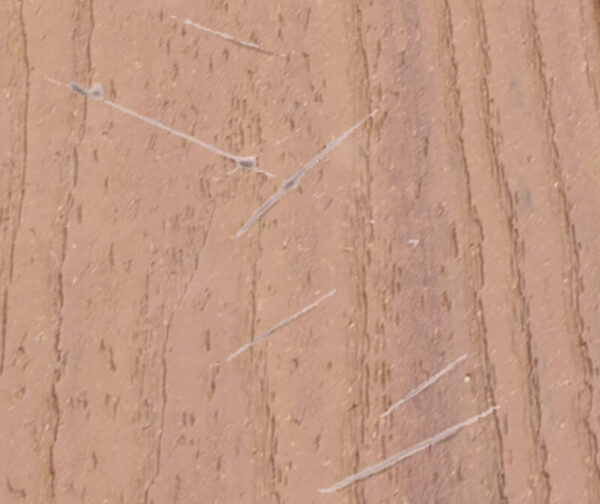Composite Care Guide
How to clean and maintain composite products
Cleaning
We advise cleaning composite at least twice a year to prevent the build up of any dirt and debris. This helps maintain the appearance and longevity of the composite
- Sweep the composite using a soft bristled brush or use a leaf blower to blow away any loose debris
- Rinse the composite with a hose pipe to help remove surface dirt and prepare the composite for cleaning
- Use hot soapy water and apply to the composite using a soft bristled brush or a mop. Work in sections scrubbing gently to remove any loose dirt and stains. Composite cleaners can be applied but follow the manufacturer’s instructions and test on a small area in case of any damage. Avoid any harsh chemicals or abrasive cleaners
- Rinse the composite thoroughly with a hose pipe to remove any soap and loose debris. Follow the direction of the grain ensuring all soap and debris is washed away
- For a more deeper clean use a pressure washer with a maximum 1500 PSI ensuring the gun is at least 15 inches away from the composite when applying. Excessive pressure can damage the surface and colour of the composite
Mould & Mildew
We advise removing all pollen and soil as quickly as possible, if left on the composite for a long period of time it will cause mould and mildew and can cause damage. Keep the composite clean, allow drainage and trim nearby foliage. This helps maintain the appearance and longevity of the composite
- Sweep the composite using a soft bristled brush or use a leaf blower to blow away any loose debris
- Rinse the composite with a hose pipe to help remove surface dirt and prepare the composite for cleaning
- Use hot soapy water and apply to the composite using a soft bristled brush or a mop. Work in sections scrubbing gently to remove any loose dirt and stains. Composite cleaners can be applied but follow the manufacturer’s instructions and test on a small area in case of any damage. Avoid any harsh chemicals or abrasive cleaners
- Rinse the composite thoroughly with a hose pipe to remove any soap and loose debris. Follow the direction of the grain ensuring all soap and debris is washed away
- For a more deeper clean use a pressure washer with a maximum 1500 PSI ensuring the gun is at least 15 inches away from the composite when applying. Excessive pressure can damage the surface and colour of the composite

Spot Stains
We advise removing spillages as quickly as possible to prevent the spillage from setting in and damaging the appearance of the composite
- Sweep the composite using a soft bristled brush or use a leaf blower to blow away any loose debris
- Rinse the composite with a hose pipe to help remove surface dirt and prepare the composite for cleaning
- Use hot soapy water and apply to the composite using a soft bristled brush or a mop. Work in sections scrubbing gently to remove any loose dirt and stains. Composite cleaners can be applied but follow the manufacturer’s instructions and test on a small area in case of any damage. Avoid any harsh chemicals or abrasive cleaners
- Rinse the composite thoroughly with a hose pipe to remove any soap and loose debris. Follow the direction of the grain ensuring all soap and debris is washed away
- Tougher stains may need to be lightly sanded (uncapped composite/ sanded finish) by using 60-80 grit sandpaper and slightly sanding over the stain. If lightly sanded the colour will fade slightly but will eventually clear over time due to weathering. Do not sand any capped composite due to its protective shell

Watering Staining
We advise leaving any stains that look like water stains to disappear on their own with weathering. When composite is new there may be some residual still in the wood component from manufacturing, this may 7 appear the first times the composite is wet and will look like a water stain
- Sweep the composite using a soft bristled brush or use a leaf blower to blow away any loose debris
- Rinse the composite with a hose pipe to help remove surface dirt and prepare the composite for cleaning
- Use hot soapy water and apply to the composite using a soft bristled brush or a mop. Work in sections scrubbing gently to remove any loose dirt and stains. Composite cleaners can be applied but follow the manufacturer’s instructions and test on a small area in case of any damage. Avoid any harsh chemicals or abrasive cleaners
- Rinse the composite thoroughly with a hose pipe to remove any soap and loose debris. Follow the direction of the grain ensuring all soap and debris is washed away
Ice & Snow
We advise removing snow from the composite promptly after a snowfall to prevent it from compacting and turning into ice
- Use a plastic snow shovel with a non-abrasive edge and shovel as much snow as possible in the direction of the composite to prevent any potential damage
- Remove any ice using a plastic ice scraper. Carefully break the ice up rather than forcefully chipping away at it as this will cause damage to the composite
- If required a salt free ice melt can be applied but it must be safe for composite. Follow the manufacturer’s instructions and test on a small area in case of any damage
- Rinse the composite thoroughly with a hose pipe to remove any soap and loose debris. Follow the direction of the grain ensuring all soap and debris is washed away
- Rinse the composite thoroughly with a hose pipe to remove any white residue from the ice melt. Follow the direction of the grain ensuring all residue is washed away
Scrapes & Scratches
We advise using pads or caps on the feet of all garden furniture and do not drag or scrape anything against the composite to avoid deep scrapes and scratches that may not be able to be repaired
Light scrapes and scratches will eventually blend in with the rest of the composite or will disappear over time due to weathering
Uncapped composite
Deep scrapes and scratches on the sanded finish can be repaired by using 60-80 grit sandpaper and slightly sanding over the scratch or scrape. If lightly sanded the colour will fade slightly but will eventually clear over time due to weathering. We advise testing on a small area in case of any damage
Capped composite
Deep scrapes and scratches can be repaired by using a heat gun on a maximum 450° setting. Ensure the heat gun is at least 6 inches away from the composite and pass over the scrapes or scratches evenly without stopping in one place. Excessive heat will damage the polymer coating and the composite will need replacing. We advise testing on a small area in case of any damage




